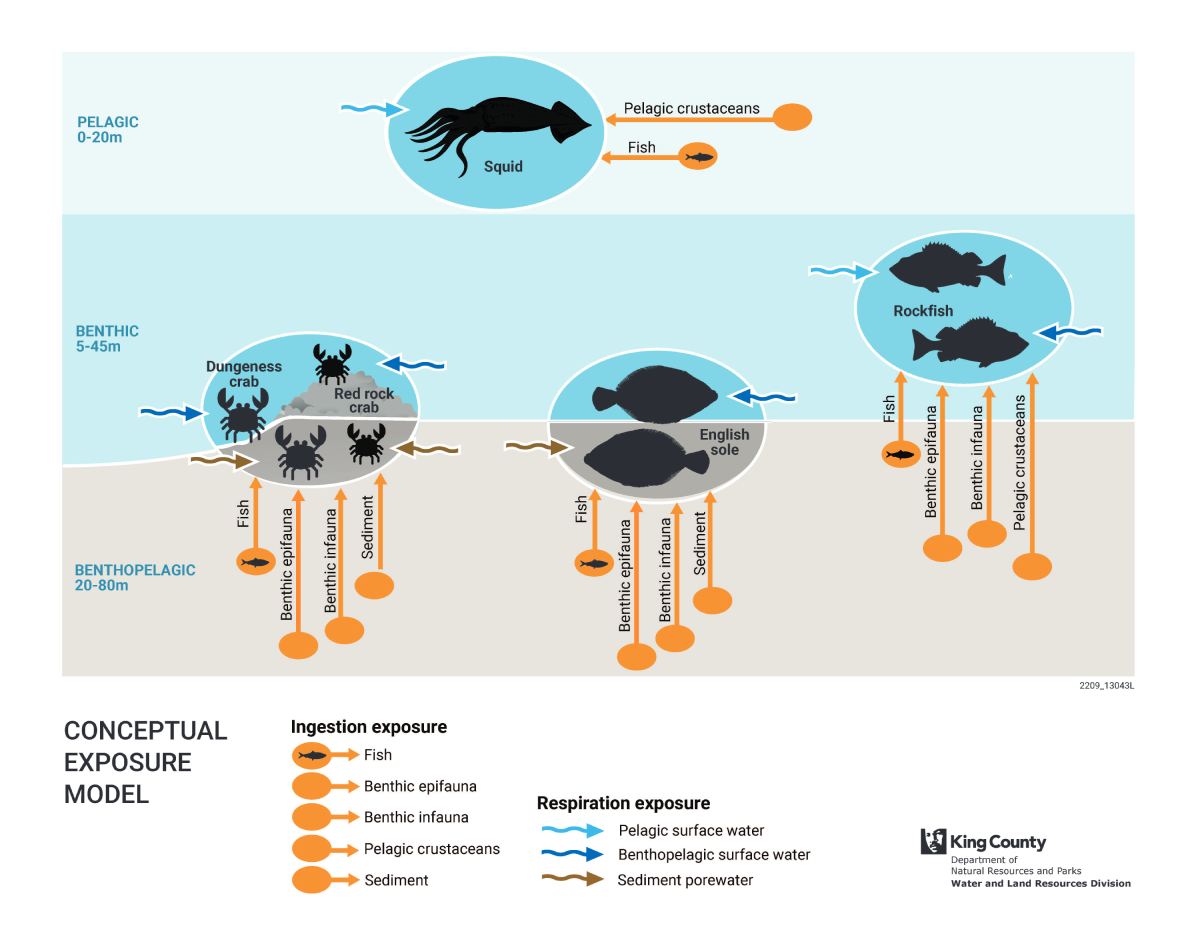Fish and Crab Toxics Monitoring

Many types of toxic contaminants, such as industrial chemicals, legacy pollutants (for example PCBs), metals, and pesticides, enter Puget Sound waters through multiple pathways, including stormwater runoff, wastewater, industrial inputs, and even from the air. These contaminants get into fish and other aquatic life through their food and by exposure from the water and sediments they live in. Certain chemicals, like heavy metals and legacy pollutants, can bioaccumulate and biomagnify in animals. Both processes can lead to high levels of these contaminants in the muscle, fat, and organs of fish and other aquatic animals. The levels of toxic contaminants in their tissues can negatively affect the health of aquatic life and pose a risk to the animals and people who eat them.
Our marine tissue monitoring program focuses on fish and crab. We have several goals aimed at protecting humans and wildlife from harmful contaminants and tracking progress toward reducing pollution in King County:
-
Human health goal: Understand the type and concentrations of contaminants in fish and crabs that could be consumed by people fishing in our county.
-
Wildlife goal: Understand how chemical exposures impact the health of fish and crab in King County marine waters.
-
Tracking pollution goal: Track how contaminant concentrations in fish and crab change over time as we work to better treat stormwater, control combined sewer overflows, and clean up contaminated sediments.
We also monitor for toxic contaminants in freshwater fish from King County lakes and streams! Please contact wlrtoxicology@kingcounty.gov for questions regarding our tissue monitoring data.
 Translate
Translate